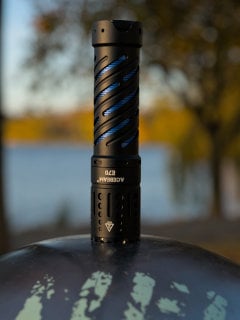Hey! I’m looking for a headlamp to use on a kayak. Everything you use while paddling eventually gets drenched, so it needs to be waterproof. I paddle on the Baltic Sea so the water is slightly salty, too.
I’ve noticed a bunch of headlamps have magnetic charging now. For example, Skilhunt H150 looks good and fairly priced and it’s IPX8 rated, but there’s the magnetic charing connector. I’ve seen reports that it produces sparks when shorted. Isn’t that going to be a problem when it gets wet? I also wonder what kind of effect repeatedly being exposed to the sea water has on it. Anyone got experience with it?


Basically there are two common charging systems:
Armytek like, where you have to loosen the tailcap to charge the battery. When tightened, the terminals are shorted, so it’s absolutely safe. When loosened, they are in series with the battery, but the driver limits the current. So the current would be whatever the flashlight draws in regular use - while it’s off just a few microamps.
Olight or Skilhunt like, where the charging terminals are separate from the normal circuit. It needs some kind of protection. Either a clever circuit using a FET, a diode or something like a polyfuse that disconnects the terminal if the current gets too high. These type is prone to leakage, for example 2mA for many Olight or much higher current for most Skilhunt. These methods are safe for short circuit situations (although a short pulse of current could cause sparks), but canddrain the battery if the terminals are bridged with some resistance. Depending on the water/mud properties it could pass some current, too little to trigger the protection, but enough to drain the batteries over a longer duration.